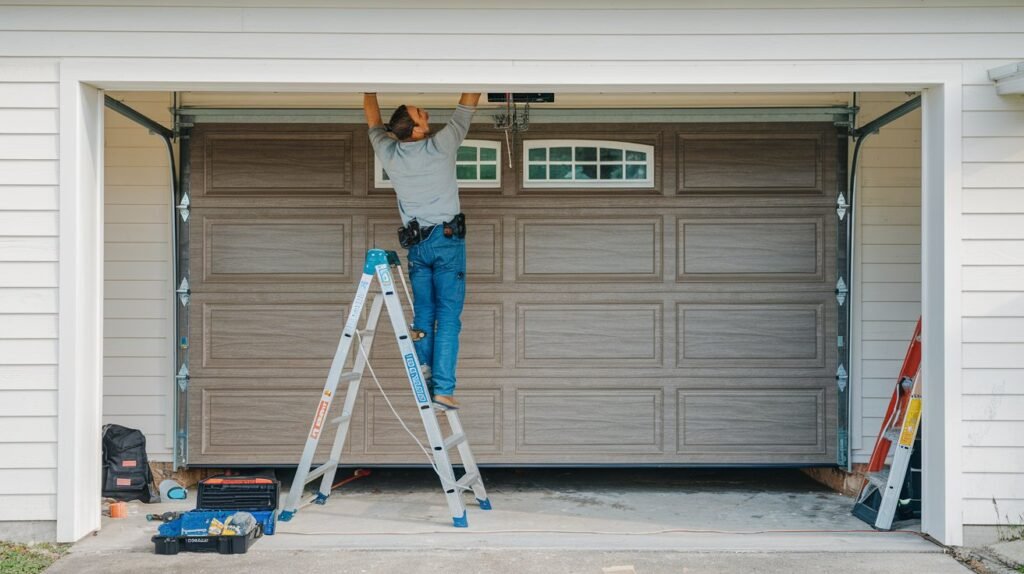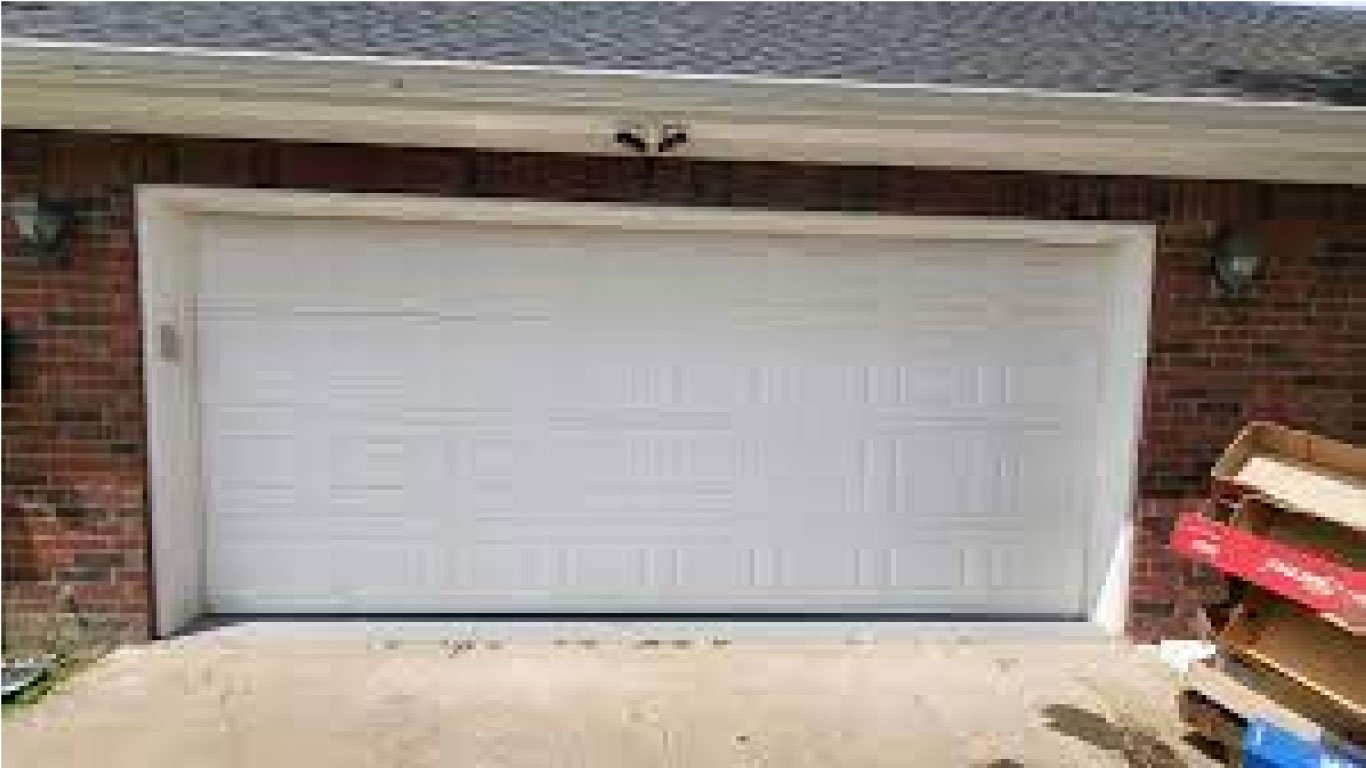If you own a home, your garage door is not just a functional entrance—its a critical part of the security, curb appeal, and energy efficiency of your home. Whether you’re building a new house, upgrading an existing door, or repairing a broken one, it’s worth learning the process of garage door installation. In this article, we’re going to take the basics and dissect them step by step. Let’s get started!
—
Why Garage Door Installation Matters
Garage doors are some of the largest moving things in your home, and they exert a larger influence on daily life than people might expect. An installed garage door:
– Improves curb appeal: A stylish door can make your home more attractive.
– Improves safety: New doors contain advanced locking systems.
– Saves energy: Insulated doors keep your garage warm.
– Increases the value of the home: A new garage door gives a high return on investment (ROI) at resale.
But it won’t matter if your door is not installed correctly. Poor installation can lead to alignment issues, safety hazards, and costly repairs down the line.
—
Professional vs. DIY Garage Door Installation
While DIY projects are rewarding, garage door installation is best left to the professionals. Here’s why:
1. Safety Risks: Garage doors are heavy (up to 400 pounds!) and operate under high tension. One miscalculation may result in injury or devastation.
2. Technical Expertise: Installers understand how to calibrate springs, sensors, and openers for smooth performance.
3. Warranty Protection: Many manufacturers require professional installation to keep warranties valid.
4. Time Savings: A pro can complete the job in hours, not days.

That said, if you’re experienced with home projects and have a helper, installing a basic door might be feasible. But proceed with caution!
—
Step-by-Step Garage Door Installation Process
Here is a general overview of how a professional typically installs a garage door:
1. Pre-Installation Preparation
– Measure: Careful measurement of width, height, and headroom is necessary.
– Choose door type: These include sectional, roll-up, tilt-up, and side-hinged doors.
– Prepare tools: Drillers, wrenches, levels, and protective equipment are employed.
2. Remove the Old Door (If Necessary)
– Unplug the opener and release tension from the springs (dangerous if not done carefully!).
– Remove and disassemble the old door with care.
3. Install the Tracks and Panels
– Install vertical tracks onto wall brackets.
– Install horizontal tracks onto the ceiling.
– Assemble door panels from the bottom, fitting hinges and rollers.
4. Install Springs and Cables
– Torsion springs or extension springs are installed above the door or on the tracks.
– Cables are installed for lifting the door evenly.
5. Install the Opener (If Necessary)
– Install the motor unit and connect it to the door.
– Initialize the remotes and safety sensors.
6. Test and Adjust
– Repeat opening and closing the door to check balance and alignment.
– Lubricate moving parts and tighten hardware.
—
Common Mistakes in Installing a Garage Door
Little errors can create huge problems. Be careful not to do these mistakes:
– Leaving out measurements: A too-big or too-small door will not function properly.
– Neglecting safety protocols: Wearing eye protectors and gloves at all times.
– Malfunctioning springs: Never repair or replace the springs yourself.
– Downturning track: Misaligned tracks cause jerky movement and wearing.
—
How Much to Install a Garage Door?
There are varying costs based on type of door, materials, and labor. Rough estimate as follows:
– Low-end single-layer steel door: $500–$1,000 (all inclusive of installation).
– Insulated steel or wood door: $1,000–$2,500.
– Custom wood or high-end doors: $2,500–$5,000+.
Labor will usually cost 30–50% of the overall price. Obtain quotes from 2–3 local installers to compare.
—
Selecting the Proper Garage Door for Your Residence
All garage doors are not equal. Keep these factors in mind:
Material
– Steel: Long-lasting, low maintenance, and inexpensive.
– Wood: Beautiful and versatile but requires maintenance.
– Aluminum: Light and rust-resistant, perfect for coastal areas.
– Fiberglass: Dent-resistant and mimics the appearance of wood grain.
Insulation
Insulated doors (polyurethane or polystyrene foam) reduce noise and energy costs, especially if your garage is attached to your home.
Style
Match your home’s aesthetic. Some popular styles are:
– Traditional raised-panel
– Carriage-house (country charm)
– Contemporary full-view (glass doors)
Clever Features
Wi-Fi remote openers let you operate the door from your phone and be alerted to security issues.
—
After-Installation Garage Door Maintenance
Keep your investment in good health with these simple tips:
– Monthly checks: Check automatic reverse sensors and oil rollers.
– Seasonal servicing: Secure bolts and inspect weatherstripping.
– Cable and spring adjustment: Hire a professional to do it every year.
—
FAQs About Garage Door Installation
Q: How long does installation take?
A: Installations take 4–8 hours, depending on complexity and door type.
Q: Can I do a garage door installation myself?
A: You can, but it’s not recommended due to safety issues.
Q: How long does a garage door last?
A: 15–30 years with regular care for steel doors; wood doors 10–25 years.
Q: Do I need a permit?
A: Local codes need to be reviewed—permits for replacements are rarely required.
Final Thoughts
A garage door is a long-term investment in your home’s functionality and appearance. While garage door installation might seem daunting, hiring a licensed professional ensures safety, efficiency, and peace of mind. Ready to upgrade? Reach out to local experts for personalized advice and quotes tailored to your needs.
Need help with installation? Contact us today to schedule a consultation or explore our range of high-quality garage doors!




